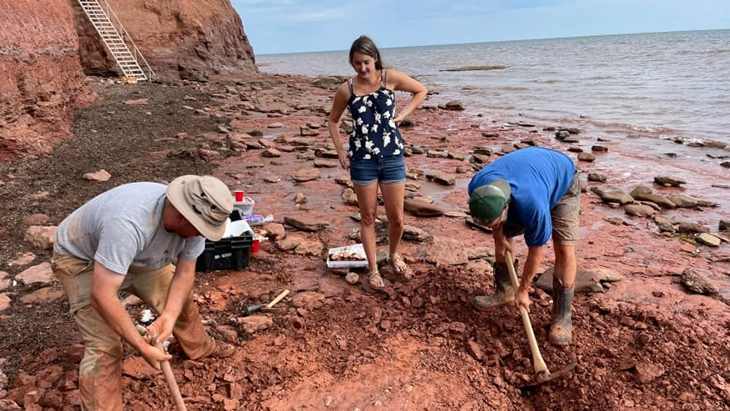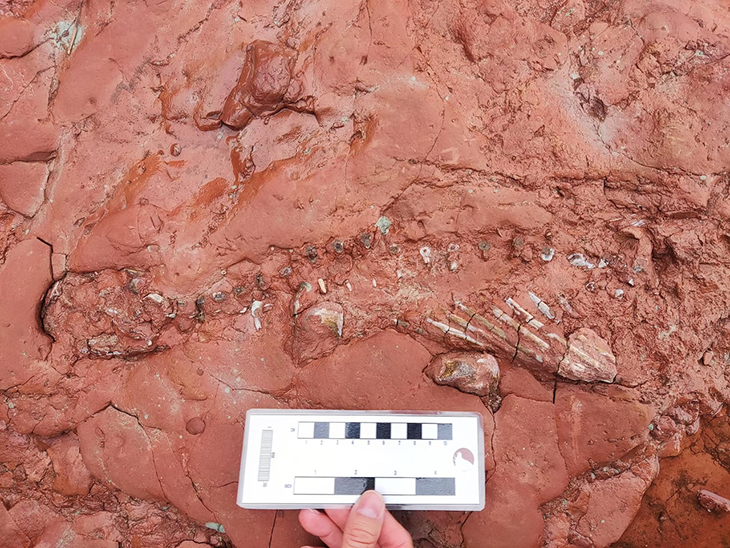
Much to one teacher’s complete and utter surprise, while walking on the beach in Canada, Lisa Cormier noticed something a little unusual. But while her first thought was that it was maybe the remains of something interesting, it turned out to be a once in a lifetime type of discovery. At least that’s what paleontologists are calling it.
The remains could possibly belong to a 300-million years old creature that, while belonging to a prehistoric species, is brand new to science. In fact, most experts are claiming that this “once-in-100-years” find could even possibly rewrite the fossil records.
According to Ms. Cormier, she had been walking down Cape Egmont in the southwest Prince Edward Island (PEI) when she saw the skeleton buried in the ground.
She told CBC news, “I saw something that I thought was a root. And when I looked closer at it, I realized that there were ribs. And then I saw the spine, and the skull.”
She explained how she took photos and shared them with her family. After which, her mother-in-law decided to share them to Laura McNeill, who handles the Prehistoric Island Tours. But when McNeill saw it, she got in touch with other specialists and with Ms. Cormier to double check what she had discovered.

One of the experts that got wind of the story was a geologist and paleontologist John Calder went to the site to look at the fossils for himself. He explained that they looked like they were dated near the end of the Carboniferous period and into the Permian period, which was around 300 million years ago.
Calder, who also happens to be an expert in prehistoric PEI, told CBC that the fossil was an “extremely rare” find.
He shared, “A fossil like this comes up every 50 years or 100 years,” he said. “I mean there’s no real frequency, but it’s rare. And this could be a one-of-a-kind fossil in the tree of life … of evolution of amphibians, to reptiles, to mammals to us.”
What Calder believes is that the creature was an early reptile that came after their class broke off from amphibians during the Carboniferous period, although it’s still not confirmed.
He continued, “This is early in the evolution of reptiles from amphibians, and they’re branching out. And so it’s going to be a real puzzle. It’ll take probably a good year to figure out the identity of this thing.”
There are very few specimens that are from this era in existence, which is why understanding where they’re located in the evolution of reptiles or its place in the correct time is quite tricky.
As a result of this incredible discovery, Calder has been advising the beachgoers to look out for possible finds, considering these types of prehistoric finds have become much more common. This is mostly due to the fact that there are way more beachcombers than there are paleontologists.
Cormier added, “To think that I found something that might be 300 million years old, it’s incredible. I think it’s gonna be a one time [thing], but I’ll continue my walks and I’m going to continue to look for sea glass and maybe I’ll find something else.”
What are your thoughts? Please comment below and share this news!
True Activist / Report a typo


